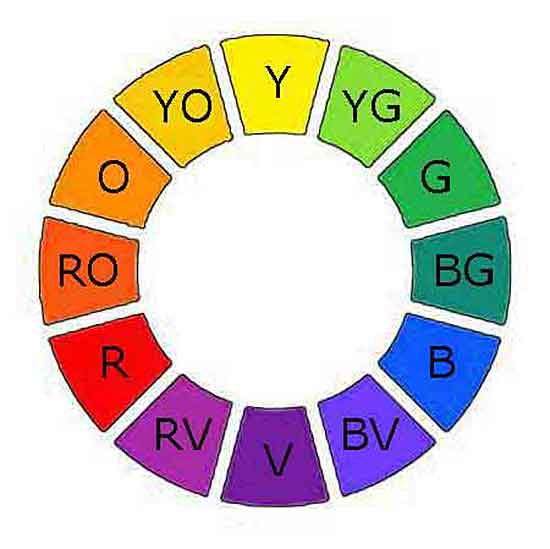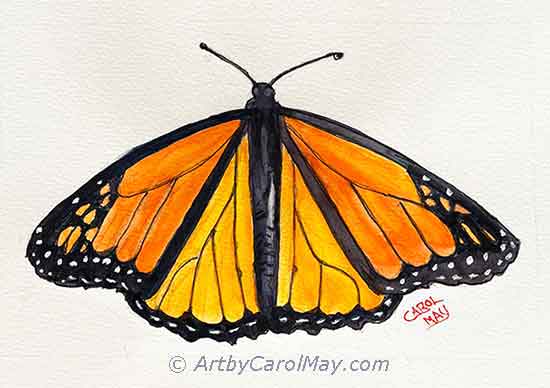- Home
- Color Wheel
- Meaning of Color
How artists use the meaning of color in painting art
Artists often use the meaning of color to convey deeper messages in their paintings.
Color is everywhere. It's fascinating with its emotions, sentiments, and symbolism.
Do you wonder how a color can evoke certain emotions or why some colors stand out more in your art? Are you intrigued by the idea that the choice of colors can enhance or suppress specific aspects of your paintings?
As a budding or proficient painter, knowing the sentiments of each color, how it shapes perception, and how to effectively use color can significantly elevate your artwork.
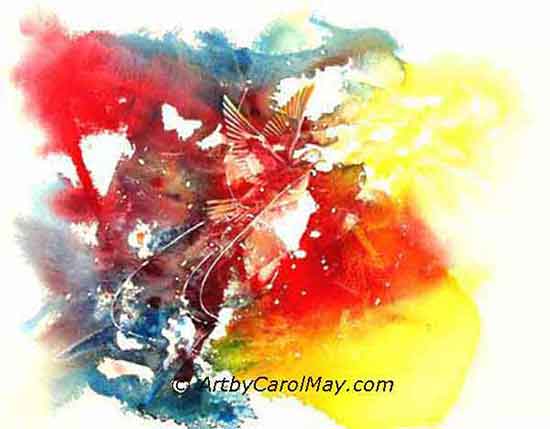 Color sets us free!
Color sets us free!Symbolism: the meaning of Color in Paintings
Color is amazing. Let's look at the seven rainbow colors.
Artists can use color symbolism to create emotional appeal in our paintings. Color empowers us to engage the viewers in a meaningful dialogue without uttering a single word.
NOTE: These colors explanations are from a Western mindset. We don't want to offend anyone. Color symbolism isn't universal, certain cultural contexts can shape color symbolism.
In Western societies, white may denote purity or peace, while in some Asian cultures, it signifies mourning and death. Black can symbolize either death and sadness or elegance and power.
yellow, the sunshine color
Yellow is often associated with joy, optimism, and energy. Bright yellow hues transmit pleasure and lightness. Golden tints offer an air of antiquity and comfort.
Emotionally, yellow is a stimulating color that arouses feelings of cheerfulness and mental activity.
Yellow can have some negative effects. It may be seen as a warning, like in our caution traffic lights and cowards are called yellow.
Yellow is the lightest color of the spectrum. It draws attention and can be used to create highlights in a piece of art. It works well with darker shades making a sharp contrast.
It brings a sense of liveliness to our art paintings.
orange makes artwork stand out
Orange is between the expressive red and cheerful yellow. It symbolized warmth, enthusiasm, and is often
linked with creativity and success.
It’s an emotionally invigorating color that encourages social interaction.
Visually, orange is a hot color, noted for its visibility and attention-grabbing quality. Artists can use orange to draw the viewer's attention to key areas of the painting.
Combining orange with cooler colors, especially blue can create a dynamic visual impact.
It’s also the perfect hue for capturing the vibrancy of sunsets, autumn, or any scene with a warm, energetic feel.
red commands attention
Red is used by artists in nearly every culture. The sight of red in our paintings brings an immediate sense of life.
 His heart bleeds for us.
His heart bleeds for us.Symbolically red is the color of passion. It symbolizes love, intensity, courage, power, anger, danger, blood or the devil depending on the context.
Emotionally, red stimulates a faster heartbeat and more adrenaline, making it a high-impact color that can evoke strong feelings.
Visually, red is a fiery color, powerful in drawing attention and making the other colors stand out when it's used as an accent.
Artists can use red to create an area of emphasis or capture high-energy in their artworks.
Its bold nature serves to dramatize and intensify the elements of our paintings where it is applied. It creates an undeniable visual draw.
purple ignites the imagination
Purple or violet combines the energy of red with the calm of blue. Depending on the shades, it can evoke feelings of luxury, wealth and royalty. It may also be used to portray courage.
Beyond that, violet is also associated with creativity, imagination, mystery, and magic.
It’s a calming yet spiritually uplifting color that can inspire introspection and spiritual sentiments in the viewer. Visually violet (also called purple) can add depth, richness, and contrast to a painting.
Violet is a beautiful counterbalance to yellows, oranges, and other warm tones.
As an artist, using violet in your work can add a richer and more luxurious feel to the painting. It can generate an air of imagination, leading viewers to a deeper understanding and appreciation of your artwork.
blue skies
Blue is the main color seen in the sky and oceans. It can represent peace, tranquility, loyalty, wisdom and confidence or melancholy depending on the saturation and tone.
It has calming, soothing effects resulting in mental relaxation. Visually, blue hues recede and create a sense of distance and space.
Artists often use blues in landscapes and seascapes to create atmospheric perspective.
Applying different shades of blue, from the palest blue to deep indigo, can create a sense of calm, space, or coolness in our paintings.
Blue is an extremely
useful color for artists. It's capable of creating a variety of moods, atmospheres,
and depths. Mid-tone to darker blues
stimulate trust and loyalty.
indigo power
Indigo is a blend of blue and purple making look like a dark, subdued blue. It invokes intuition, wisdom and contemplation.
 Subdued colors can be powerful.
Subdued colors can be powerful.It's a compelling choice for artwork aiming to invoke deep thought.
Due to its deep nature, it's also associated with knowledge, power, integrity, and seriousness. It transmits feelings of profound thought, introspection, and wisdom.
Visually, indigo is a cooler and darker hue that can add depth and sophistication to our paintings.
Artists can utilize indigo to create points of interest or depth within their works. Its strength as a color can give a fresh, distinctive touch to our artwork.
green is the color of life
Green symbolizes life, growth,
stability
and renewal. It certainly has a strong tie to money.
but can also represent jealousy
or inexperience.
Sometimes people may be called green with envy.
It's the most restful color for the human eye. Using green is a great way to introduce harmony and a natural atmosphere into our artwork.
In landscape paintings, it creates a sense of vastness and natural beauty. Light greens are calming and rejuvenating, while dark greens communicate wealth, stability, and luxury.
Create contrast and set a peaceful mood by using varying shades of green.
Artists use color symbolism to add nuanced layers of meaning. These symbolisms can help the viewers connect more deeply and appreciate the artist's intent.
Fine art paintings rely heavily on color. What are fine art paintings?
the meaning of colors Shape Our World
Color directly impacts how we interpret the world.
 The colors of nature shape our world.
The colors of nature shape our world.Consider how a sunset paints the sky in an array of hues. Each color change subtly shifts our perception of the time of day.
Warm colors, such as red, orange, or yellow create a sense of warmth, excitement, or even aggression.
Orange found in vibrant sunsets and autumn landscapes speaks of transition.
Red depending on its context can symbolize everything from divine love to the devil's temptation.
Violet was once used for royal and sacred themes. In today's art, it
often conveys feelings of magic, mystery, or nostalgia.
Cool colors like blue, green, or violet tend to provide a calming, soothing effect.
Blue in an early morning sky to twilight, introduces calm and tranquility. The presence of green in an artwork can shape a soothing, relaxed ambiance.
Strategic use of color allows the artist to shape a compelling painting.
the meaning of
Color related to emotions
Have you ever wondered why some colors make you feel calm
while others sow seeds of excitement? This is because colors affect
human behavior and emotion.
For instance, lighter hues like sky blue of soft pink create peace and tranquility. Vibrant colors like bright red and orange excite the viewer with energy.
By understanding and using these concepts, artists can effectively engage their audiences on an emotional level.
learn the colors
Try this: When you paint a color ask yourself, "What emotion does this evoke?"
Answering this question consistently will drill the emotional meaning of color into our artwork. Selecting colors that express emotions will become second nature.
Colors have the ability to trigger responses.
Artists convey their
messages, manipulate the viewer's emotions, guide their gaze,
and enhance the viewer's overall experience with their use of colors.
Painting Art with the meaning of color
Splashing Colors onto the Canvas: each color carries a certain weight. Even the absence of color speaks volumes.
Whether it's a self-portrait, a landscape, or an abstract piece, how we use color can significantly impact the narrative and emotional impact of our paintings.
Bold, saturated colors can draw the audience's attention and stir excitement. Pale or muted hues can imply softness, nostalgia or even indifference.
In mixed media art, a harmonious color scheme can unify different materials and elements, creating a cohesive image out of potential chaos.
Thoughtful use of color transforms our artwork by altering its mood and message. Don't be afraid to experiment and push your boundaries.
Take full advantage of the vast color world and its infinite opportunities.
 Let your paintings move out with color!
Let your paintings move out with color!The symbolism of color is an important tool for the painting artist. Each hue carries a weight of meanings and interpretations that transcend their visual attributes.
Artists use colors to give the perception of three dimensions on a two-dimensional painting surface. Colors can also
influence spatial perceptions. We use blue to create aerial perspective.
Impressionist artists paint contrasting
colors side by side to trick the eye into perceiving a different color
entirely.
Abstract use of color is a popular technique in painting. This allows artists to explore the emotional impact of colors, away from their traditional restraints.
Color
blocking
is a technique often used by modern and contemporary
artists. They juxtapose large areas of different colors into an interesting
visual
composition.
Glazing watercolor is a technique involving the application of thin layers of translucent paint. It allows artists to create a depth and luminosity in their work. The play of light through these layers can dramatically alter the viewer's perception of color.
Color gradation, a smooth transition between two colors, can create a sense of depth, volume, or light in a painting.
Artists can create a variety of effects and moods when they know the meaning of colors.
color is awesome!
I hope this journey through the colors has colored your perspectives, the way you see and use color in your paintings.
Truly, colors are not just visual delights; they're psychological levers in our hands. They are a tool we artists can skillfully use to mold the opinions and emotions of our viewers.
Don’t let the exploration end here. Use this newfound knowledge to experiment and play with colors like never before. Enjoy the captivating world of art with a refreshed vision and renewed wisdom of color.
Enjoy your art journey and also explore the array of painting pages on this website.
Recent Articles
-
You Can Paint Butterfly Art!
Apr 21, 24 08:31 AM
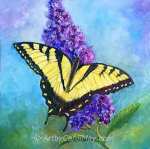 Unlock your creativity and start painting butterfly art. Discover the techniques of painting realistic butterflies. Link to 5 different pages on how to paint butterflies with tips and valuable insight…
Unlock your creativity and start painting butterfly art. Discover the techniques of painting realistic butterflies. Link to 5 different pages on how to paint butterflies with tips and valuable insight… -
Learning to Paint
Mar 29, 24 12:00 PM
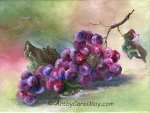 Learning to paint is fun! Millions of people are painting and you can too!
Use these five easy things to jump start your painting journey.
Learning to paint is fun! Millions of people are painting and you can too!
Use these five easy things to jump start your painting journey. -
Easy Butterfly Painting: Watercolor Monarch Step-by-Step Tutorial
Mar 25, 24 03:39 PM
Get creative with an easy butterfly painting tutorial. Discover the joy of drawing and painting a vibrant Monarch Butterfly with simple watercolor techniques. -
Overcoming an Artist's Block
Mar 15, 24 12:00 PM
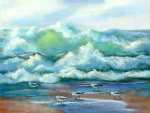 How to survive an artist's block. All artists can have blocks or delays, but we get over it.
What is an art block? How do we get started painting again?
How to survive an artist's block. All artists can have blocks or delays, but we get over it.
What is an art block? How do we get started painting again?
Recent Articles
-
You Can Paint Butterfly Art!
 Unlock your creativity and start painting butterfly art. Discover the techniques of painting realistic butterflies. Link to 5 different pages on how to paint butterflies with tips and valuable insight…
Unlock your creativity and start painting butterfly art. Discover the techniques of painting realistic butterflies. Link to 5 different pages on how to paint butterflies with tips and valuable insight… -
Learning to Paint
 Learning to paint is fun! Millions of people are painting and you can too!
Use these five easy things to jump start your painting journey.
Learning to paint is fun! Millions of people are painting and you can too!
Use these five easy things to jump start your painting journey. -
Easy Butterfly Painting: Watercolor Monarch Step-by-Step Tutorial
Get creative with an easy butterfly painting tutorial. Discover the joy of drawing and painting a vibrant Monarch Butterfly with simple watercolor techniques. -
Overcoming an Artist's Block
 How to survive an artist's block. All artists can have blocks or delays, but we get over it.
What is an art block? How do we get started painting again?
How to survive an artist's block. All artists can have blocks or delays, but we get over it.
What is an art block? How do we get started painting again?



